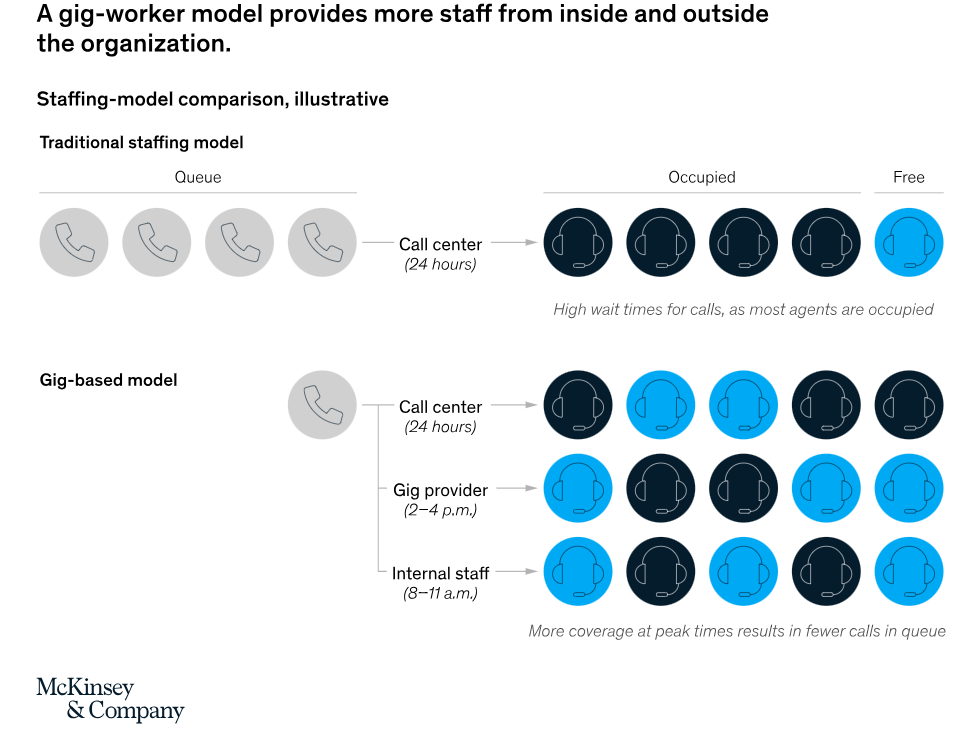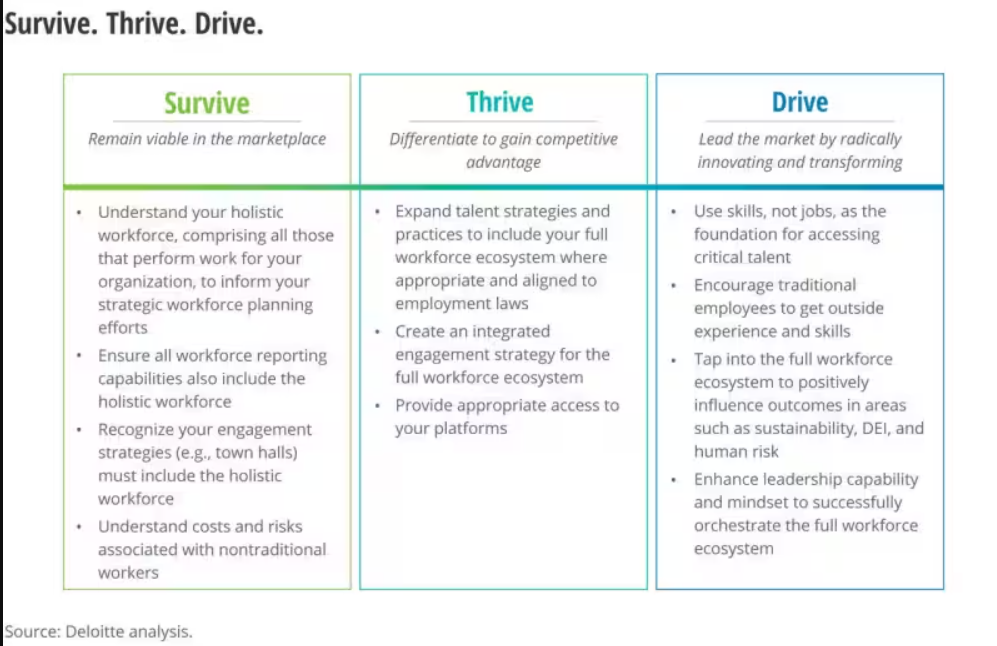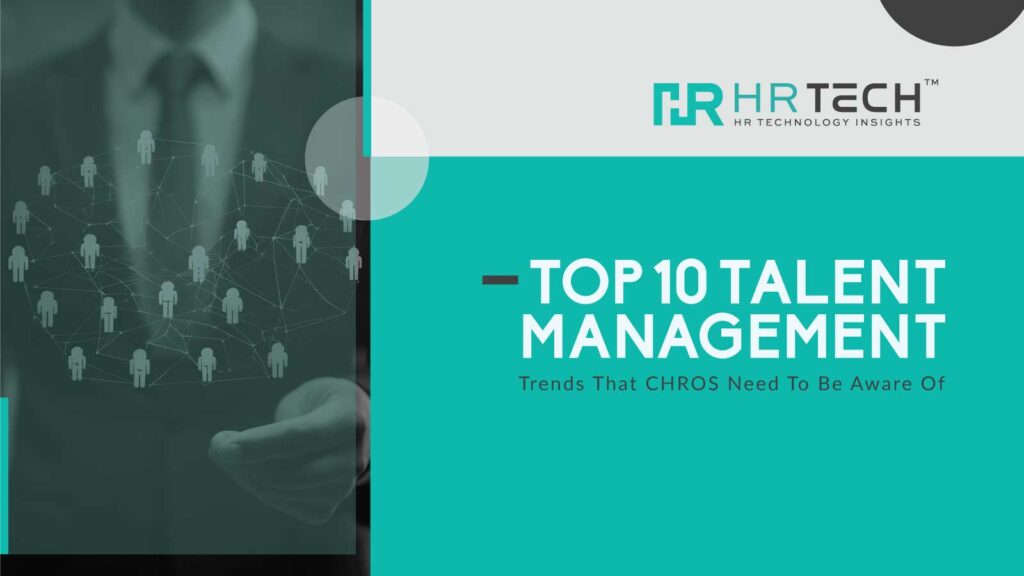Introduction
The landscape of talent management has evolved dramatically in recent years, driven by technological advancements, shifting demographics, and changing employee expectations. As we enter 2024, CHROs must stay ahead of the curve to navigate these trends and ensure their organizations remain competitive.
Amid this shift, CHROs need to play a bigger role than merely HR managers; they also need to be cultural designers, innovation catalysts, and strategic partners. In addition to overseeing the day-to-day HR operations, they also have to plan for emerging trends, build talent strategies that complement corporate goals, and foster an environment at work that draws and keeps top people.
We will examine the top 10 talent management trends that CHROs need to be aware of in 2024 in the sections that follow. These trends offer insights, tactics, and successful practices to help us navigate the maze.

Source: Deloitte
1. AI-Powered Talent Acquisition
Artificial intelligence (AI) is revolutionizing the way organizations recruit and hire talent. AI-powered tools can automate tasks like resume screening, candidate sourcing, and scheduling interviews, freeing up recruiters to focus on building relationships with potential candidates. Additionally, AI can help identify bias in the hiring process, ensuring a more equitable and inclusive selection process.
2. Employee Experience as a Top Priority
Employee experience (EX) has become a critical factor in attracting and retaining top talent. CHROs must prioritize initiatives that enhance the employee experience, such as:
- Flexible work arrangements: Offering remote or hybrid work options can improve employee satisfaction and productivity.
- Personalized development: Tailored learning and development programs can help employees grow and advance their careers.
- Inclusive culture: Creating a welcoming and inclusive environment where everyone feels valued and respected is essential for attracting and retaining diverse talent.
HR Tech Blog: Advancing Diversity and Inclusion: The Role of Advanced HR Tools
3. Upskilling and Reskilling
As technology continues to advance, the skills required for many jobs are changing rapidly. CHROs must invest in upskilling and reskilling programs to ensure their employees have the necessary skills to remain competitive. This can involve providing access to online courses, workshops, or on-the-job training. Upskilling and Reskilling is never going to get out of trend thus, to stay updated about industry events and technologies one needs to keep upskilling and reskilling.
4. Gig Economy and Contingent Workforce
The gig economy has grown significantly in recent years, and many organizations are turning to contingent workers to fill gaps in their workforce. CHROs must develop strategies for managing a diverse workforce that includes both full-time employees and contingent workers. This may involve implementing new HR processes and providing benefits to contingent workers.

Source: McKinsey & Company
5. Diversity, Equity, and Inclusion (DEI)
DEI is no longer just a nice-to-have; it is a business imperative. CHROs must prioritize initiatives to create a more diverse, equitable, and inclusive workplace. This may involve implementing diversity training programs, conducting DEI audits, and establishing employee resource groups.

Source: Deloitte
6. Employee Well-being and Mental Health
Employee well-being and mental health have become increasingly important in recent years. CHROs must provide resources and support to help employees manage stress, prevent burnout, and maintain a healthy work-life balance. This may include offering mental health benefits, flexible work arrangements, and wellness programs.
7. Data-Driven Talent Management
Data analytics is becoming increasingly important in talent management. CHROs must leverage data to make informed decisions about talent acquisition, development, and retention. This may involve using HR analytics tools to track key metrics, such as turnover rates, employee satisfaction, and time-to-fill.
HR Tech Blog: AI Talent War Heats Up in India: 88% of Companies Willing to Offer Higher Salaries for Engineers (Honeywell Study)
8. Talent Mobility and Global Talent Management
As businesses become increasingly global, CHROs must develop strategies for managing talent across borders. This may involve establishing global talent pools, providing international assignment support, and ensuring compliance with local labor laws. By effectively managing these processes, organizations can attract, develop, and retain top talent from around the world, drive innovation, and achieve their strategic objectives.
9. Employer Branding and Recruitment Marketing
Employer branding is essential for attracting top talent. CHROs must develop a strong employer brand that reflects the company’s values and culture. This may involve creating compelling content, leveraging social media, and participating in industry events. By working together, they can help companies attract top talent, improve employee satisfaction, and enhance their overall reputation.
10. Technology Adoption and Automation
Technology is transforming the HR function. CHROs must stay up-to-date on the latest HR technology trends and invest in tools that can improve efficiency, reduce costs, and enhance the employee experience. This may include adopting cloud-based HR systems, AI-powered tools, and employee self-service portals.
HR Tech Blog: The Evolution of Compensation: Exploring Automation Trends in Salary Appraisal
Conclusion
By staying ahead of these trends, CHROs can ensure that their organizations are well-positioned to attract, develop, and retain top talent in the competitive job market. As the landscape of talent management continues to evolve, CHROs must stay ahead of the curve to navigate these trends and ensure their organizations remain competitive. By prioritizing employee experience, investing in upskilling and reskilling, embracing technology, and fostering a diverse and inclusive workplace, CHROs can create a high-performance culture that attracts and retains top talent.
The talent environment is more complicated and dynamic than it has ever been as we approach 2024. Our workplaces and employee expectations are changing as a result of the effects of globalization, technology, and demographic changes. To keep their companies competitive and draw in top people, CHROs need to adjust to these developments. This report’s tendencies provide a road map for negotiating the talent quagmire. CHROs can establish a high-performance culture that draws and keeps top people by embracing AI-powered talent acquisition, emphasizing the employee experience, investing in reskilling and upskilling, managing a diverse and inclusive workforce, and utilizing data-driven insights.
However, being successful in talent management takes time and effort. It calls for constant learning, flexibility, and creativity. CHROs need to remain up to date on experiments with new approaches, and emerging trends. They can set up their companies for long-term success in the cutthroat workplace by doing this. The function of CHROs will continue to change as we move to the future. They’ll need to be leaders in culture, pioneers in technology, and strategic thinkers. CHROs may assist their companies in thriving in the always-shifting field of personnel management by accepting these opportunities and challenges.
To share your HR technology insights and announcements, please write to us at news@intentamplify.com



